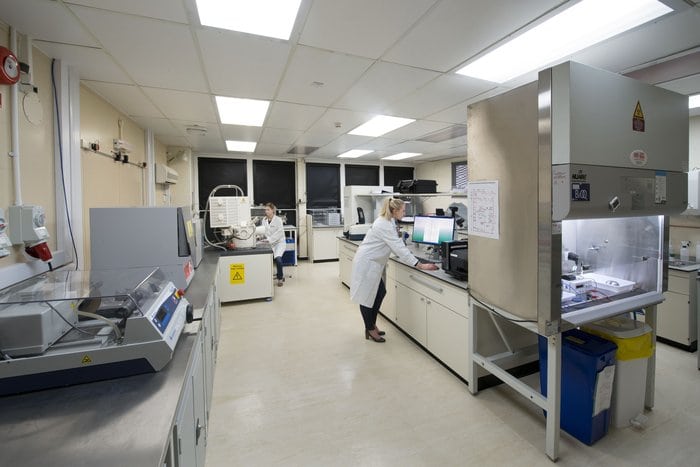Latest News

The ESA-RAL Advanced Manufacturing Laboratory. Photo: ESA
Despite a brighter outlook for defense spending in the U.S. and in Europe, western companies in the Aerospace and Defense (A&D) industry need to be more aggressive in developing new technologies in the face of emerging competition from commercial entrants and from rival countries racing to make advances in Artificial Intelligence (AI) and advanced weapon systems, says a new report by the audit and consulting firm PwC. The report points to relatively low organic investments by A&D companies in Research and Development (R&D) compared to commercial technology companies that are beginning to enter the sector as well as executive inventive and compensation that are geared toward earnings rather than long-term value creation.
The Aerospace and Defense Trends 2018-2019: Keeping Pace with a Focus on Innovation report states that in 2017 the A&D sector spent 4.1 percent of sales on R&D, with only the global industrial (2.8 percent) and automotive (4 percent) sectors in the same range. Other sectors — such as software and the internet (14.1 percent), healthcare (11.4 percent), and computing and electronics (7.1 percent) — were far more aggressive in their R&D spending.
“For some time now, defense contracting has been among the most risk-averse sectors, often opting to return capital to shareholders via share buybacks and dividend payouts, leaving research and development wanting,” says the report, which was released on Wednesday. Later, the report says, “Slow-walking R&D efforts has never been a recipe for long-term success, and some of the significant threats confronting the A&D industry show why that’s even more true in 2018.”
The report says that commercial technology companies that are entering the A&D space are “dedicated” to developing new technologies, highlighting Elon Musk’s 16-year old SpaceX rocket company that has proven its ability to launch and recover used boosters. It also highlights China’s “big push” to develop AI for military applications.
The report’s authors acknowledge that some A&D companies are planning to boost their capital expenditures following tax cuts in the U.S. this year but says the number of these companies are limited and that it’s not clear how much of the additional spending will go to R&D.
Recommendations for strategic investments by A&D companies include capital investments that have options based on returns and “drivers of intrinsic value,” a more dynamic investment strategy that goes beyond annual planning, incentives that enable a focus on “successful innovation and improved competitive advantage,” and partnering with startups that have developed technology that is ahead of their own.
The report notes that some companies, including Europe’s Airbus Group, Boeing, Lockheed Martin, and Raytheon, have all invested in high-technology firms working in areas such as cybersecurity, integrated circuits, and augmented reality.
“The A&D sector is clearly at a crossroads,” the report concludes. “And it is an especially challenging juncture because in recent years the industry has tended to pull in its horns rather than be bold and daring. Companies can choose either road, but only one — the one that requires companies to be less risk-averse — leads to a lucrative future.”
Get the latest Via Satellite news!
Subscribe Now